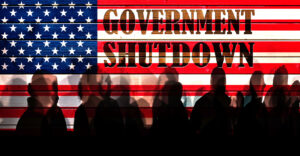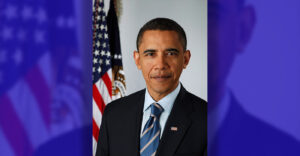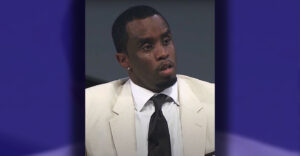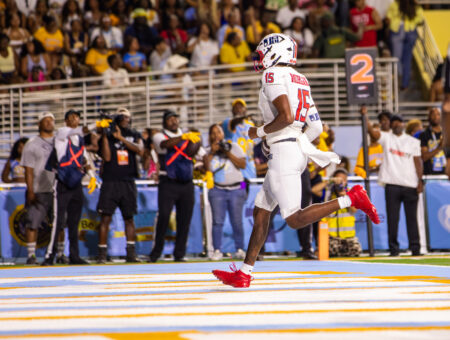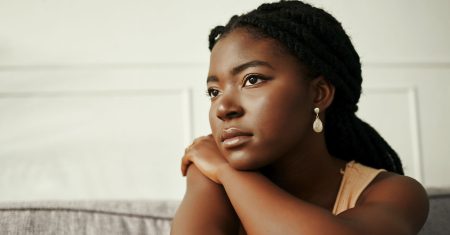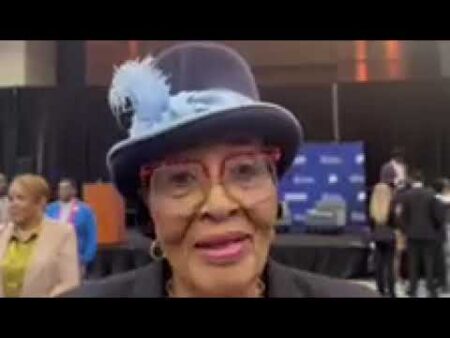There is a particular cruelty to political leaders placing the blame for structural problems that are well within their power to address on the victims.
When Mayor Lori Lightfoot describes how the city will enforce a youth curfew by saying, “We don’t want to arrest children. If we have to, because they’re breaking the law, we will,” all I hear is a threat of more violence and a finger pointed at young people who deserve so much more freedom than our unequal city affords them.
Included in the list of goals 16-year-old Seandell Holliday wrote for himself in a mentorship program last year were pursuing his passion for music, taking care of his family, and living to age 21. Seandell, whose fatal shooting at Millenium Park last weekend sparked the mayor’s announcement of a new curfew for young people, had some level of personal understanding of a landscape of violence that was pervasive enough to question whether he would live just a few more years.
That landscape is one that includes both the kind of interpersonal gun violence that ended Seandell’s life, and also the structural violence that keeps our city both segregated and profoundly unequal. It is not a coincidence that the neighborhoods experiencing the highest rates of gun violence are some of the city’s poorest, predominantly Black, and on the city’s south and west sides, impacted by massive economic divestment and neglect.
At a rally and press conference about the city budget last August at Parkman Elementary in Fuller Park—which has sat empty since its closure in 2013—educator and CTU leader Tara Stamps gave an impassioned speech that has stuck with me. She referred to closed schools as “the physical manifestation of ‘I don’t give a fill-in-the-blank about you.’”
The now-vacant school stands in painful contrast to the bustling police station across the street on 51st and Wentworth, where many of us have spent long nights waiting for the release of friends and loved ones. If “I don’t give a fill-in-the-blank about you” is the message an empty school conveys to young people, a fancy park with checkpoints and metal detectors underlines that message, and the police department empowered to criminalize youth drives it home.
Placing new restrictions on the freedom of young people—restrictions that will undoubtedly impact Black, Brown, and working-class families most—dramatically misses the mark. Curfews have been shown to be ineffective as a violence prevention strategy, and they add to the overall problem by exposing young people to violent policing when enforced. Encouraged by the Clinton administration, juvenile curfew laws became popular in the mid-1990s as part of a tough-on-crime approach. The strategy sought to criminalize “superpredators,” a racist myth that did overtime to blame young Black people for social problems now exacerbated by decades of more divestment from public programs across the country. While Mayor Lightfoot’s rhetoric in 2022 may sound different than that of the architects of mass incarceration, imposing a curfew on top of pushing forward city budgets that underinvest in communities and overinvest in police ultimately supports the same status quo.
At a balloon release for Seandell, one of his friends said, “Downtown was a place you go out and have fun. . . . Now you can’t go nowhere without having to fight for your life.” In addition to failing Seandell, who lost his life, and the young person facing incarceration for his murder, the city has failed Seandell’s friends and everyone in Chicago who feels there is nowhere for them to go.
Criminalization as a response to violence shifts responsibility away from systems and places blame on those impacted by divestment, inequality, policing, and violence. It keeps people asking, “What’s wrong with young people or Black people?” and “Why are they breaking the law?” These questions hold the conversation about what to do back because they frame the problem as one of individual people’s actions and treat “crime” as a fixed category as opposed to something determined by political decision makers.
Instead, we can frame the problem of violence as one that happens in a broader social, economic, and political context. We can ask, “What systems are making it that so many people are struggling? What investments do communities impacted by violence need in order to be OK?”
State Senator Robert Peters has led statewide violence prevention efforts that are rooted in the latter set of questions. “We need to provide for everybody,” he said. “And we need to see public safety not reliant on the old walls of segregation but a new public safety for all that says that Chicago belongs to everybody, Chicago belongs to the people.”
Long-term solutions to violence look like uprooting racist inequality and ensuring young people and communities suffering from divestment have what they need to thrive. They look like reversing the budget priorities that have increased the police budget every year while money for social programs, schools, health services, and housing remain on the chopping block.
One step would be investing in the Peace Book, a proposed ordinance driven by the vision of young people that would reinvest funds from police into youth jobs doing peacekeeping, restorative justice, and conflict mediation in neighborhoods most impacted by gun violence. Approaches to violence prevention that center offering young people community-oriented programming and jobs that provide some economic support have shown to be more effective than punishment and increased policing.
Miracle Boyd, a 20-year-old youth organizer with GoodKids MadCity, said, “A lot of people are in survival mode; they’re not living. We need to give life back into our youth and into the adults that are raising them.” Holistic and effective solutions to violence look like ensuring that Chicagoans of all ages have access not only to basic necessities to survive, but to the things communities need to live and be well: an abundance of places to gather, connect, heal, and engage with each other and the world around us.
Another youth organizer, Assata Lewis, said, “Going to the parks on the north side versus the ones on the south side is like night and day.” An approach to public spaces and community programs that seeks to reduce community violence and structural racism would be one that values investing in neighborhoods like Englewood-—where life expectancy is a full 30 years younger than it is downtown—just as much as it does in tourist destinations like Millennium Park.
Harsh, sensational responses to violence may be politically convenient for city leaders like Lightfoot, who want to look like they are taking action, but it is this type of political opportunism that consistently presents us with false solutions.
What we need to engage in is the long-term work of building an equitable city where everyone feels like Chicago belongs to them, and making it so that it truly does. What if the city poured resources into communities: well-funded schools, grocery stores, health centers, mental health care? What if the city funded thousands of jobs that hired counselors, health-care workers, violence interrupters, and other community-oriented public safety jobs instead of police? What would a community full of physical manifestations of the message that the city does belong to us look like?
Asha Ransby-Sporn was a co-founder of BYP100, an organization of young Black people, and has been deeply involved in organizing against criminalization and policing in Chicago since 2013.
